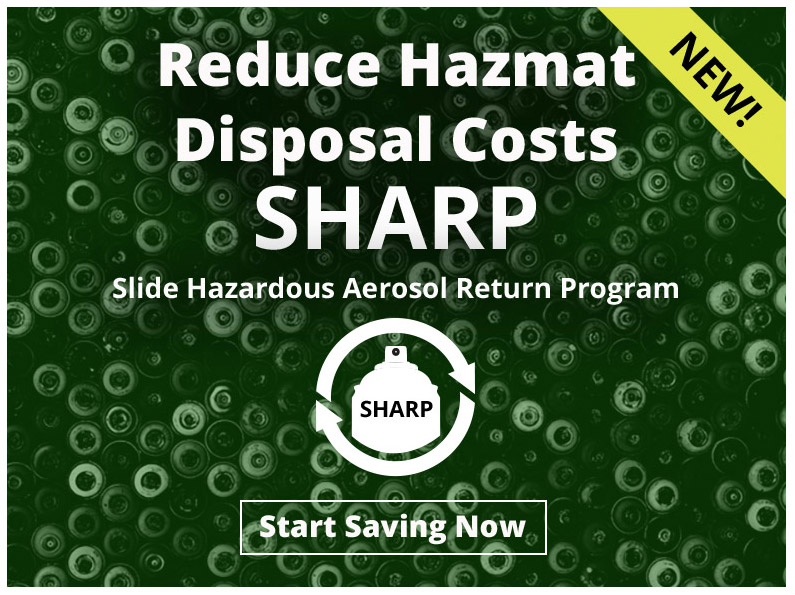May 18th, 2022
This is the third in Slide’s series of Best Practices articles featuring the most popular products for the plastics molding industry. In this post, we will focus on the importance and selection of rust preventives.
One of the fastest ways for a molder to go broke is to allow their mold or tooling equipment to rust. This most typically occurs when molds are in storage during periods of non-use. If rusting is not quickly corrected, expensive repairs will be necessary. It is not uncommon to spend several thousand dollars in restoring a rusted mold.
Using an inexpensive material that is not designed for industrial applications (such as WD 40) will likely yield disappointing results. Typically, these products are designed for water displacement (WD) and not for neutralization of fingerprints or acid residues. In addition to acid neutralization, a good anti-rust product will provide a protective film that gels over parts, flows into intricate, hard to reach spaces and covers up any nicked or scratched surfaces. It will not contain wax or other material that might adhere to the mold surface, nor will there be a need for extra cleaning steps.
As with non-commercial based rust removal products, these rust-preventives should also contain the essential basics to displace water droplets that may have condensed on the mold itself. However, commercial grade mixes should provide necessary oxidation and corrosion stoppage to be of any significant use in plastics molding and manufacturing.
Below is a list of the most relevant questions to ask when selecting your rust preventive product.
- How long do you intend for the mold to be stored? Molds kept over the weekend will require a far different level of protection than a mold being shipped overseas or one that will be decommissioned for months or even years.
- Do your molds run resins that have outgassing of acidic vapors or contain flame retardant additives? If so, a specialized rust preventive formulation containing a high amount of a base material should be used to help neutralize those fumes.
- Do you want a rust preventive that offers an added color dye to help ensure complete and uniform coverage across the mold surfaces?
- Are you safeguarding a mold with a mirror finish or one that requires limited or no contact with a “shop rag” or other wiping substrate? A self-cleaning anti-rust product will usually flash off upon startup after a couple of molding cycles or can easily be removed with a fast-evaporating mold cleaner.
- Are you molding parts that will filter into the food or medical market? If so, a food-grade or NSF-certified formulation should be considered.
Once the appropriate rust preventive is selected, proper application and evaluation of that chosen formulation is essential.
- The evaluation of the effectiveness of a rust preventive is quite straightforward. Did this product protect the mold during the storage period and allow for a fast introduction of equipment back into production?
- The most reliable way to protect a mold is to apply the proper rust preventive product onto the mold cavity immediately after the molding run is completed and while the mold is still warm. This will protect the mold as it cools down and allow it to be taken to the tool room before rust starts to form. We suggest applying the rust preventive formulation to the mold once it reaches 180°F or lower so that the rust preventive product does not flash off with higher heat levels.
- Molds that are run with cooling water lines and those that are run in high humidity environments are especially susceptible to mold sweating during the cool down process. These would need to be treated with a rust preventive as soon as the production run is completed and the mold is still warm.
- Spray the rust preventive product starting at the top of the mold, working left to right and moving down the mold cavity. Both the core and cavity sides of the mold require protection.
- Once the mold is cooled to room temperature, a mold cleaner should be applied to the surface to clean and remove any unwanted contamination and to remove the initial coating of the rust preventive product.
- When the mold is clean, a final coating of the rust preventive should be used on the mold cavity as well as the sprue bushings to help prevent rust from forming in this critical area.
- When the mold is fully coated and protected, it can be closed and put into storage per your company’s shut down procedures.
- “Wetter” or long-term rust preventive formulations may require a more intense mold cleaning process before it can be put back into production.
A Slide factory representative or local distributor is available to provide on-site support and recommendations to help with your selection of the most appropriate rust preventive formulation. You can request an appointment through Slide’s Top Tier Service program.




